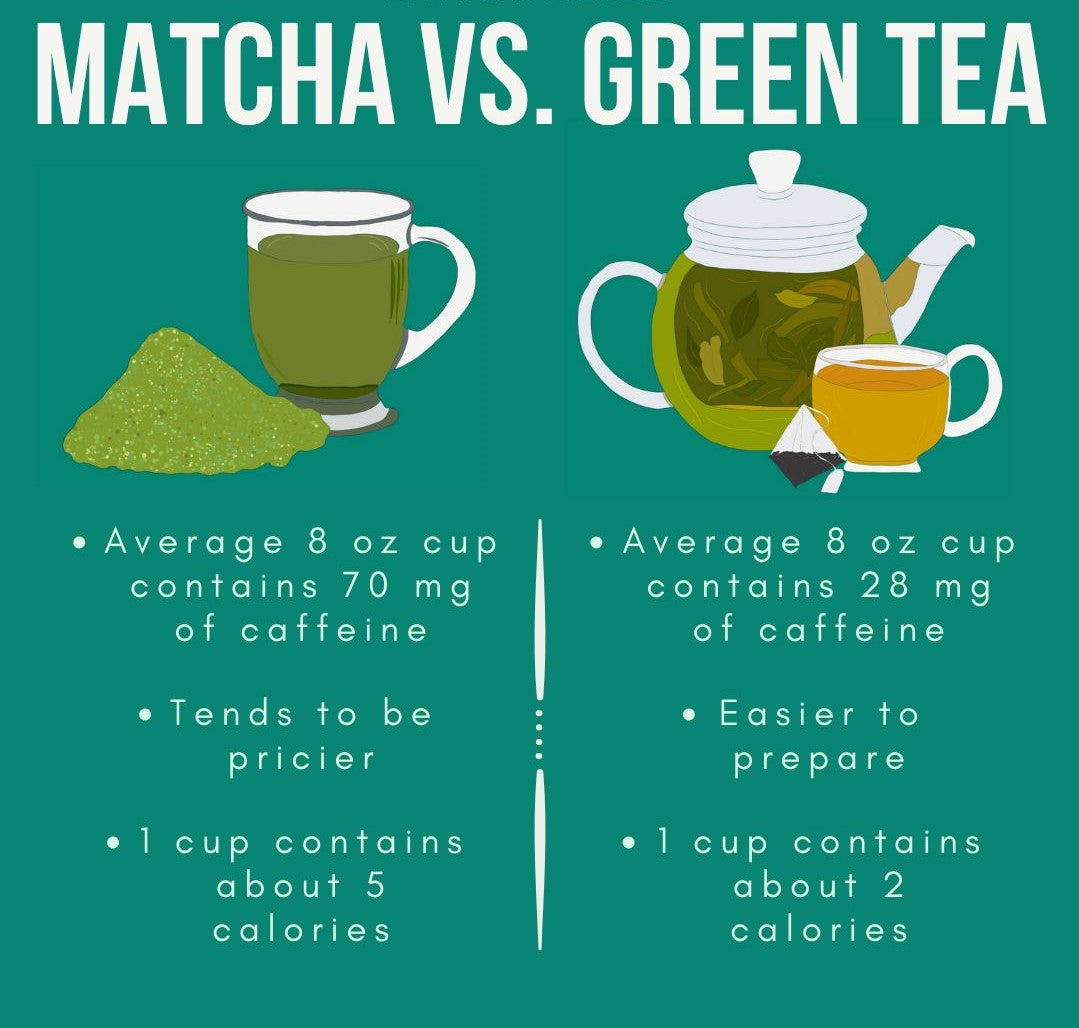In Japanese culture, matcha green tea is much more than a drink. The matcha tea ceremony has been an integral part of the traditional Japanese culture for centuries. A quiet celebration performed with grace and beauty, the matcha tea ritual is a bonding experience of mindfulness, respect and a focus on the now.
What is the difference between matcha powder and regular loose leaf green tea?
Both Matcha and green tea are derived from the same plant called Camellia Sinensis. While green tea leaves usually come in the form of a tea bag, matcha is in powder form. Matcha is actually 100% green tea leaves that have been ground into a fine powder. It is much more concentrated than regular green tea, so you only need ½ to 1 teaspoon per cup. In comparison to regular green tea, when drinking matcha, you consume the whole tea leaf!
Regular green tea also goes through a much longer processing during production, which involves the leaves being left in the sun. Comparatively, matcha bushes are kept specifically under cover to increase the chlorophyll and amino acid levels in the leaves. In terms of taste, they both have a slightly grassy undertones. However, Matcha has a much richer, more buttery flavor.

Both Matcha and Green Tea Carry Nutrition and Health Benefits
Per the U.S. Department of Agriculture (USDA), 1 cup of green tea contains about 2 calories. The amount of calories in matcha may vary slightly by brand, but according to the USDA, matcha generally contains around 5 calories per serving. Both green tea and matcha are low-calorie drinks — it’s only when you add milk, cream, sugar, sweeteners, and all of your other matcha latte favorites that the calorie count starts to creep up (but more on that later).
In general, tea drinkers may enjoy longer lives. Those who drink it regularly had a life expectancy that was 1.26 years longer compared with those who avoid the brew, likely due to the heart-healthy benefits of tea, according to a study published in January 2020 in the European Journal of Preventive Cardiology.
Green tea in particular is known as a healthy beverage, as it contains catechins, which offer antioxidant properties. According to an article published in April 2018 in Molecules, the catechins in green tea can help protect against oxidative stress and its associated diseases. There are several catechins in green tea, but the most abundant one is epigallocatechin-3-gallate (EGCG). It is this antioxidant that has been credited as giving green tea its health properties, which include anti-cancer and anti-inflammatory properties as well as cardiovascular protection, notes a review of research on the health benefits of green tea published in January 2017 in the journal Beverages.
Matcha contains at least 3 times the amount of EGCG as popular varieties of green tea (and up to 137 times the amount of EGCG compared with certain brands of green tea), according to research, says Foroutan. That’s because matcha tea is made when the matcha powder dissolves in water, so you’re consuming the entire leaf and all its nutrients. “Matcha is a supercharged version of green tea,” she says.
#Akimatcha
#OrganicMatcha
#CeremonialGradeMatcha

